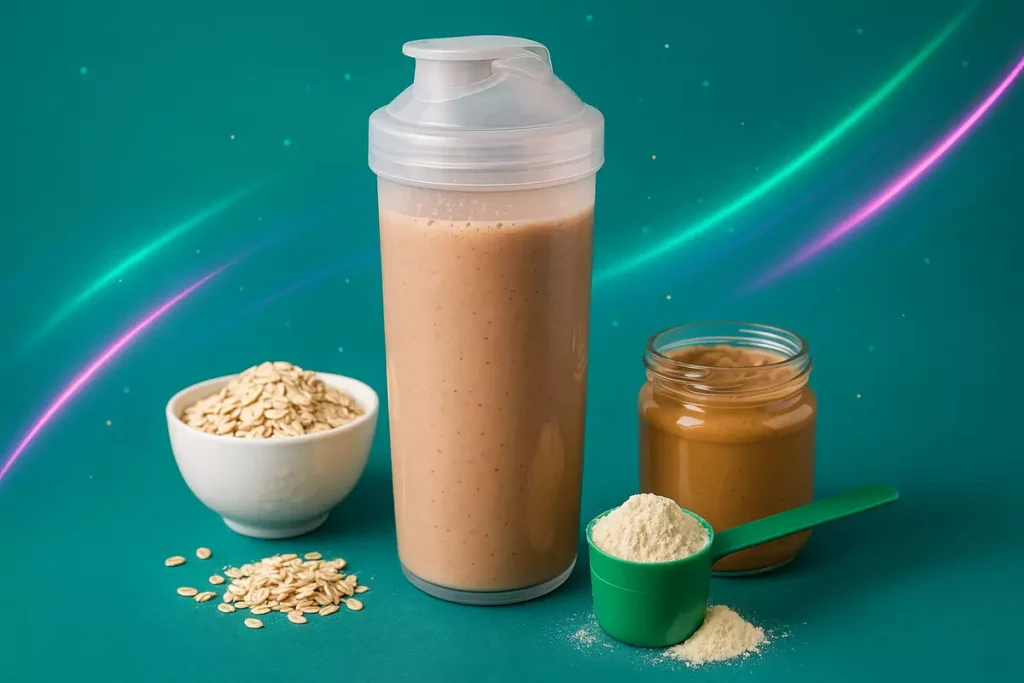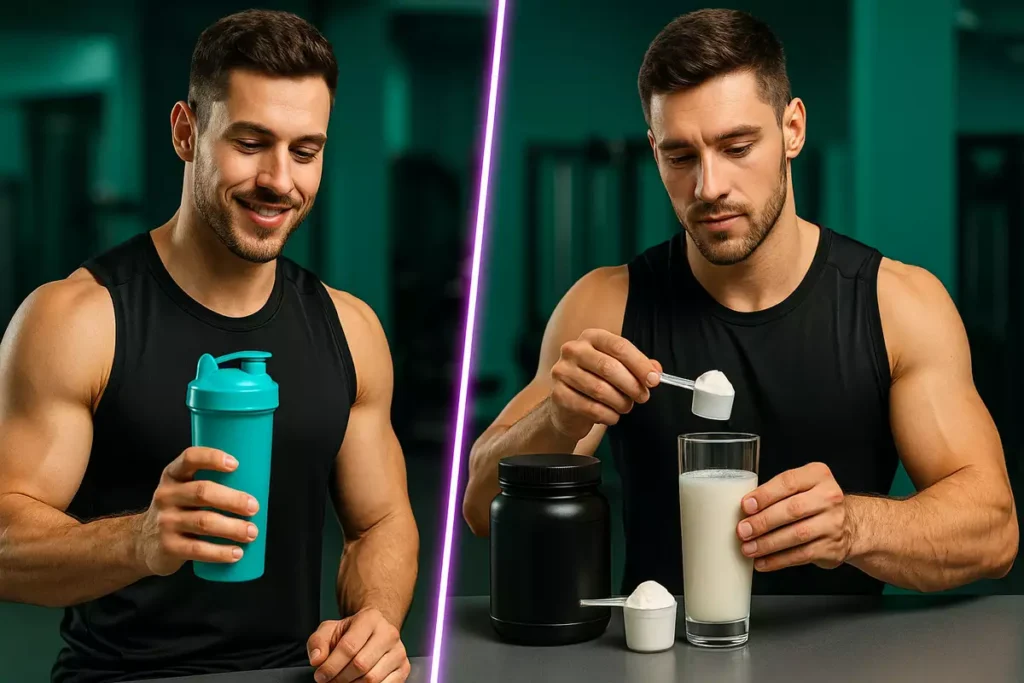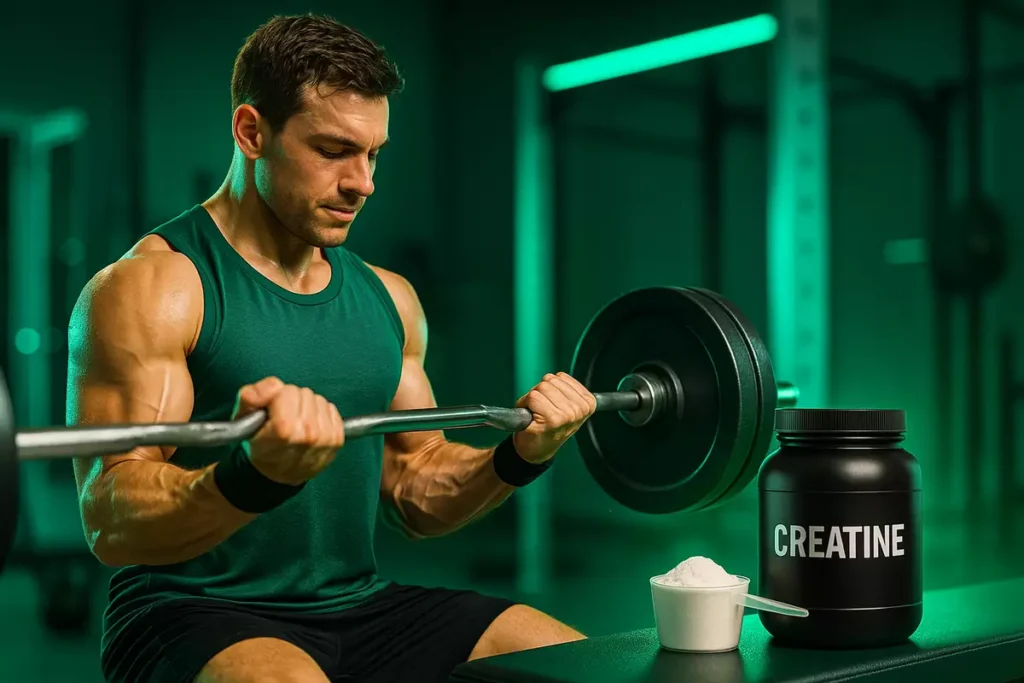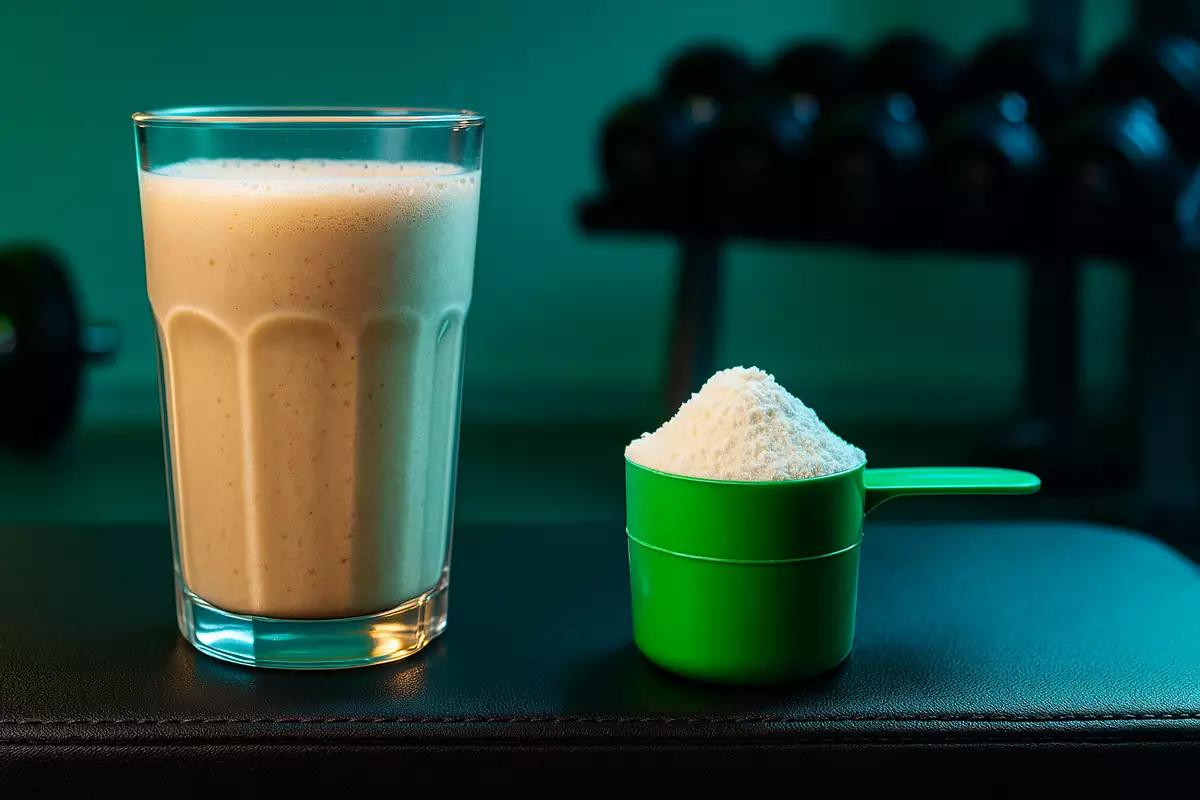Building muscle isn’t just about lifting weights—it’s also about choosing the right fuel for your body.
Two of the most popular options are mass gainers and creatine. Both claim to help you grow bigger and stronger, but they work in very different ways.
In this guide, I’ll break down the real differences, share my personal experiences, and help you decide which one will get you to your size goals faster.
Table of contents
Which Works Better for Muscle Size?
If you want pure, quality muscle size, creatine wins for most people.
It boosts your strength, helps you push harder in the gym, and improves recovery without packing on unnecessary fat.
Mass gainers have their place—mainly if you struggle to eat enough calories—but they can easily lead to fat gain alongside muscle. I’ve seen it in my own training and with my clients.
If you’re curious about how mass gainers affect digestion, I’ve also covered the common bloating issues and fixes here.
Understanding Mass Gainers

Mass gainers are high-calorie shakes made from protein, carbs, and sometimes added fats.
They’re designed for people who struggle to hit a calorie surplus through food alone.
When I first tried Optimum Nutrition Serious Mass, I gained around 4 kg in six weeks. My arms and chest looked fuller, but I also noticed a layer of fat around my waist.
The extra calories did their job—but they weren’t all muscle. If you’re wondering how long it might take to see results, check out my mass gainer results timeline guide.
Real-World Example:
One of my clients, Lucas from Brazil, had an insanely fast metabolism. He started taking a mass gainer after every workout.
In two months, he gained 6 kg. The downside? About half of it was fat, so we had to tighten up his nutrition.
For those looking to shape their body without bulking excessively, I’ve written a specific piece on using mass gainers for curves.
Understanding Creatine
Creatine is a natural compound that your muscles use for quick energy during high-intensity efforts.
Supplementing with it increases your stored muscle creatine, which means more explosive power and better performance in the gym.
When I added creatine monohydrate to my routine—5g per day after a loading week—my bench press went up by 7 kg in just two weeks.
My muscles felt denser, I could recover faster between sets, and I had the stamina to squeeze out extra reps.
Real-World Example:
Marek from Poland was stuck on his squat at 120 kg for weeks. Three weeks on creatine, and he hit 130 kg with solid form.
The strength boost was obvious, and he didn’t gain unnecessary fat.
Mass Gainer vs Creatine – Head-to-Head Comparison

Feature | Mass Gainer | Creatine |
|---|---|---|
Muscle Growth Potential | Moderate to High (depends on training and diet) | High (via strength and performance boost) |
Weight Gain Quality | Muscle + Fat | Mostly muscle + water weight |
Cost-Effectiveness | Lower (high-calorie shakes can be expensive) | High (cheap and effective) |
Best For | Hard gainers, high-calorie needs | Almost everyone training for strength and size |
If you’re budget-conscious, my mass gainer on a budget guide covers cost-effective options and homemade shake ideas.
When to Choose Mass Gainer
Go for a mass gainer if you’re truly struggling to eat enough food.
If you’re eating clean and still not gaining, a shake can fill that calorie gap without forcing you to cook another meal.
Tip from Experience:
Choose one with moderate carbs from sources like oats, not just sugar, and make sure whey protein is the main protein source.
You can even make your own at home. My oats and peanut butter gainer recipe is a clean, high-calorie option that’s easy to digest.
When to Choose Creatine

Creatine is my top pick for anyone who wants better performance, faster strength gains, and denser muscle without fat spillover.
It’s also one of the most researched and safest supplements on the market.
Tip from Experience:
Stick to pure creatine monohydrate—no fancy blends, no unnecessary fillers.
Consistency is key.
Can You Combine Them for Better Results?
I’ve tried combining creatine with a mass gainer during a bulking phase.
In just a month, my weight jumped 5 kg, but I also picked up more fat than I liked.
The upside? Even during the cut that followed, creatine helped me keep my strength.
If you want to learn when daily use of mass gainers can help—or backfire—read my mass gainer daily use guide.
If you combine them, track your body composition closely so you can adjust before fat gain gets out of hand.
Final Takeaway – Choosing the Right Supplement for Your Goal
If your goal is pure muscle with minimal fat, start with creatine. It’s affordable, effective, and proven.
If you’re underweight or have a fast metabolism that makes eating enough a chore, a mass gainer can help—just be smart about the brand and serving size.
I’ve seen both work wonders in the right situation.
The key is knowing your body, setting clear goals, and tracking your progress.
Supplements can give you a push, but your training and diet will always be the main drivers of your muscle growth.
For more on choosing the right type, see my full comparison of powder vs homemade mass gainers.



Leave a Reply